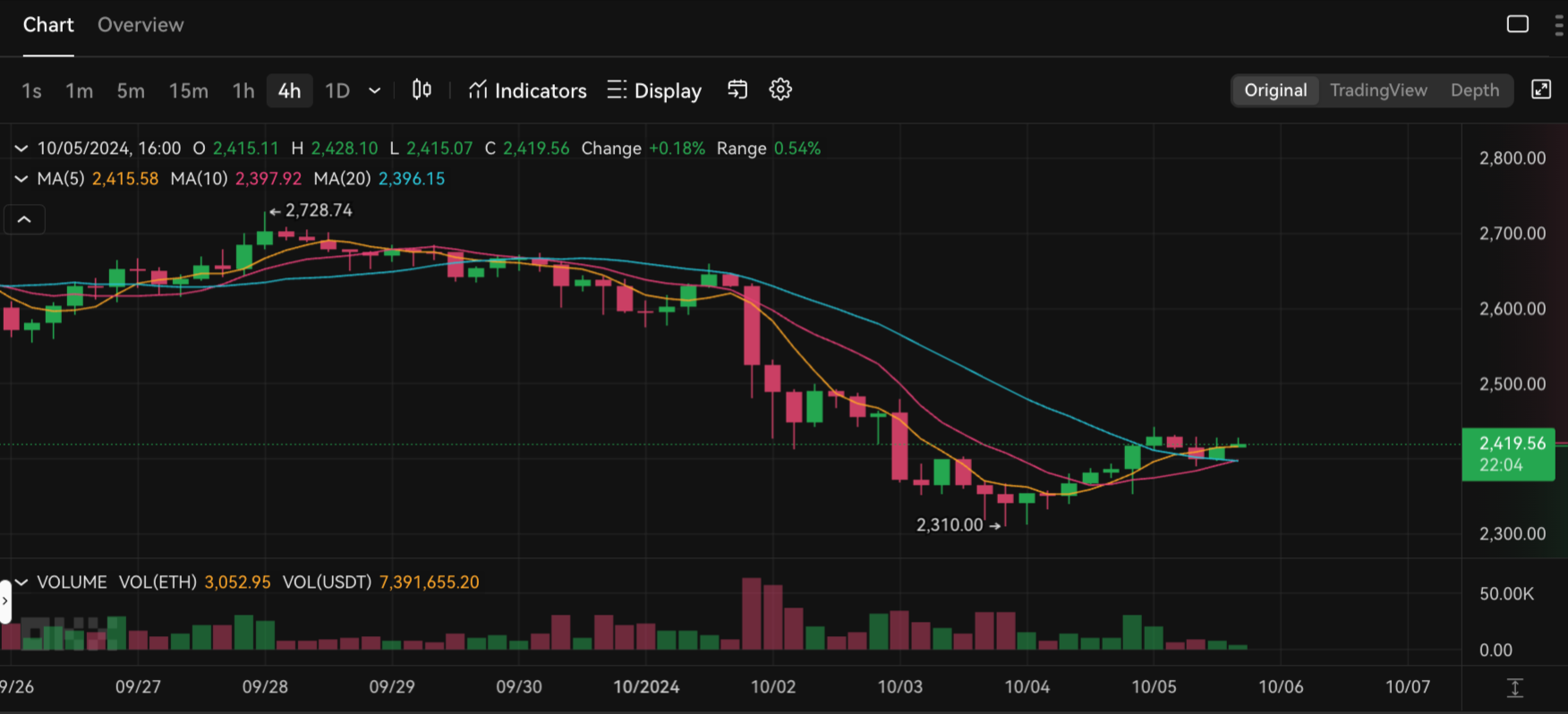According to a tweet earlier today (5th) by on-chain data analyst Yu Jin, yesterday, Cosmos developer Interchain Foundation sold 4,000 ETH raised in the ICO in April 2017, worth approximately US$9.5 million.
Interchain has sold a total of 15,100 ETH in more than five months since the end of April this year, worth approximately US$37.09 million. Ember said the foundation also holds approximately 383.8 BTC and 23,587 ETH.
Embers added, including the sold and unsold portions, that the 4882.7 BTC and 246,891 ETH raised in Cosmos’ 2017 ICO have skyrocketed from an initial value of $17 million to a current value of $213.1 million.
Ethereum whale dumped goods collectively
This week, on-chain monitoring accounts discovered that multiple ancient Ethereum whale transferred large amounts of ETH to exchanges:
- In early October, a whale participating in the Ethereum ICO once again transferred 6,000 ETH to Kraken, with a total value of approximately $14.71 million. This whale has sold 30,000 ETH in the past week. Of the 150,000 ETH obtained from the ICO, 45,000 ETH (approximately $113 million) have been sold so far.
- Another ancient whale who accumulated 21,636 ETH at a price of $6.9 in 2016 completed the sale of all ETH on October 1, making a profit of 58 million U (387 times)
- Another whale withdrew 29,414 ETH (worth $74.49 million) from Coinbase at the end of August for $2,532, and completed the sale of the last 7,000 ETH (worth $17.68 million) on the 1st, eventually selling for $2,605 Price sold all ETH, realizing a profit of $2.3 million.
- The whale that redeemed 24,000 pledged ETH from Lido on September 27 has sold all 24,000 ETH within 4 days, and also liquidated the 4,980 ETH it had previously purchased, worth US$76.45 million, making a profit of US$2.09 million.
There is still no strong reason to explain why various whale have recently chosen to "collectively sell goods". The community speculates that it may be that the old OG has sensed some market atmosphere, but more observations are still needed.
Reports from Dongzhu this week speculated that due to the overall economic environment, external war factors, and the impact of competing public chains, it is unlikely that a large amount of hot money will flow into Ethereum in the short term and drive up the price. Therefore, the whale chose to ship at this time, perhaps due to conservative expectations and uncertainty about the overall economic environment.
Extended reading: Various whale"dumped 71,000 Ethereum" in a series. Has the ETH selling pressure ended?
ETH has only increased slightly by 1% in the past month, performing far worse than BTC
As the Federal Reserve cut interest rates by two cents at a time last month, officially starting the interest rate cut cycle, Bitcoin has increased by 9.6% in the past month, once exceeding the US$65,000 mark at the end of September, and is currently trading at US$62,197 at the time of writing.
In contrast, Ethereum has only increased slightly by 1% in the past month. Although it once exceeded the US$2,700 mark last month, it was suspected of being under heavy selling pressure from whale. After entering October, it once fell to a low of US$2,310, which is far from the US$2,310 mark. It fell more than 15% from its monthly high and was trading at $2,419 at the time of writing.

Is Ethereum a short-term negative?
Many recent Ethereum development and community news indicate that the short term may not be optimistic. The Ethereum Foundation and co-founder Vitalik have recently been criticized by the community for frequently selling coins. Last month, Danny Ryan, the core figure of the Ethereum Foundation who was mainly responsible for The Merge, resigned. Ethereum has lost a major developer.
The conclusion of the Ethereum core developer meeting last month pointed out that due to technical difficulties, the Pectra hard fork cannot be upgraded in one go, and will be upgraded in two phases. The first one will be completed in early 2025, and will initially introduce features to improve the wallet experience. EIP-7702 and other eight proposals, but what is certain is that the first upgrade is a relatively small improvement, not the main Pectra hard fork content, and the second phase is the focus, which will introduce improvements to the Ethereum Virtual Machine. (EVM) proposal EOF and introduce the PeerDAS function, but the core developer meeting has not yet concluded the specific upgrade time.
In addition, recent analysis has pointed out that the so-called staking rewards are actually a "cost" to the blockchain and will dilute the value of the tokens.
Extended reading: Thoughts》Are staking rewards a hidden cost of the blockchain?





